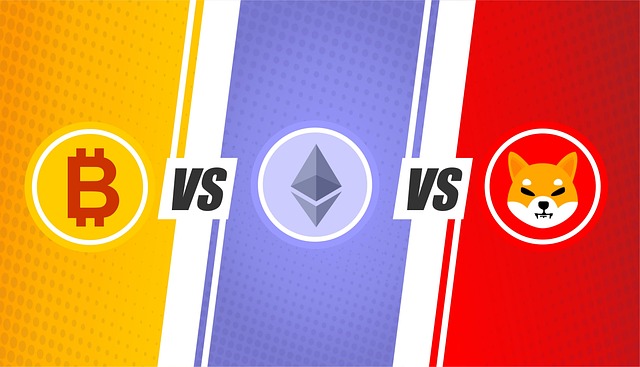Bybit vs Binance Spot Fees: A Comprehensive and In-Depth Comparison
Author: Jameson Richman Expert
Published On: 2025-08-08
Prepared by Jameson Richman and our team of experts with over a decade of experience in cryptocurrency and digital asset analysis. Learn more about us.
Engaging in cryptocurrency trading, particularly within the highly volatile spot market, requires a meticulous understanding of the fee structures imposed by leading exchanges such as Bybit and Binance. These fees are not merely operational costs but pivotal factors that influence overall profitability, especially for frequent, high-volume, or institutional traders. Over years of practical experience, I have observed that initial impressions—such as one platform being definitively cheaper—often prove to be superficial or misleading. The actual cost-effectiveness depends on a multifaceted array of variables including trading volume, account tiers, promotional campaigns, payment methods, and nuanced fee structures like maker/taker distinctions. This comprehensive analysis aims to dissect these complexities, offering an in-depth comparison of Bybit and Binance’s spot fee models, their respective advantages, pitfalls, and suitability for different trading strategies. Equipped with this knowledge, you can make informed, data-driven decisions tailored to your trading style and long-term financial goals.

Understanding Spot Trading Fees: The Foundation
Spot trading fees are the transactional costs incurred when executing buy or sell orders for cryptocurrencies, where actual assets are exchanged immediately at current market prices. These fees are typically expressed as a percentage of the transaction value and vary across exchanges based on multiple factors. Fundamentally, fee structures serve dual roles: generating revenue for the platform and incentivizing liquidity provision—an essential component for market efficiency, tight spreads, and rapid execution.
From my extensive experience, the transparency and structural design of fee schedules are paramount. Reputable exchanges like Binance and Bybit not only publish clear fee policies but also implement layered systems—such as tiered discounts, maker/taker asymmetries, and promotional incentives—that significantly impact trading costs. For instance, many platforms allow payment of fees using native tokens (e.g., Binance Coin, BNB), which can unlock discounts and rebates. Recognizing the importance of these mechanisms helps traders optimize costs, especially as cumulative expenses grow with frequent trading. Additionally, understanding the distinction between maker fees (for providing liquidity) and taker fees (for consuming liquidity) can enable strategic order placement—e.g., placing limit orders that add liquidity to benefit from lower fees or rebates.
Binance Spot Fees: An Extensive Breakdown
Binance stands as one of the world’s largest exchanges, renowned for its highly competitive fee structure and ecosystem that rewards high-volume traders. Its standard fee for spot trading is 0.1% for both maker and taker roles. Notably, Binance incentivizes fee reduction by offering discounts when traders pay fees using Binance Coin (BNB), which can provide up to 25% off, reducing effective fees to approximately 0.075%. This fee discount is automatically applied when using BNB for fee payments, simplifying cost savings.
Binance employs a sophisticated tiered fee system based on 30-day trading volume and BNB holdings. Higher tiers, accessible through increased volume or BNB balance, can reduce fees to as low as 0.02%. For example, traders executing over $20 million in monthly volume or holding significant BNB balances can benefit from these lower fees, which translate into substantial savings over time. This tiered structure dynamically rewards loyalty, incentivizing traders to increase their activity and BNB holdings, fostering a virtuous cycle of volume growth and cost reduction.
Furthermore, Binance’s ecosystem—including spot, futures, margin trading, staking, savings, and liquidity pools—creates opportunities to leverage cross-platform benefits and optimize overall trading costs. Its comprehensive API and advanced charting tools also cater to professional traders seeking precision and efficiency. To explore the latest fee schedule and tier thresholds, consult Binance’s official fee schedule: Binance Fee Schedule.
Bybit Spot Fees: A Closer Look
Initially renowned for its derivatives trading platform, Bybit has made notable strides in expanding its spot trading services. Its base fee for spot trading also begins at 0.1% for both maker and taker orders, aligning with Binance’s standard rate. However, what sets Bybit apart is its frequent promotional campaigns—often offering zero maker fees or significant discounts during special trading events—catering primarily to traders seeking immediate cost savings.
From my perspective, Bybit’s fee model emphasizes transparency, simplicity, and speed. The platform tends to run short-term promotional campaigns that can temporarily lower or waive fees, attracting traders who prefer straightforward, predictable costs. These campaigns often include rebates, fee discounts for high-volume traders, or incentivized use of native tokens, which can further reduce effective trading costs. Unlike Binance’s layered tier system, Bybit generally maintains a flat fee structure augmented by periodic promotions, making it more accessible for newcomers or casual traders.
It’s important to stay updated on Bybit’s official fee page: Bybit Fees. Additionally, Bybit’s focus on speed and user experience, combined with its promotional flexibility, makes it a compelling choice for traders valuing simplicity and fast execution.

Direct Fee Structure Comparison: Who Comes Out Ahead?
At the baseline, both Binance and Bybit initiate their fee schemes at approximately 0.1% per transaction for spot trading. Yet, the key differentiators lie in their scalability, promotional offerings, and flexibility. Binance’s tiered system incentivizes high-volume trading, with fees decreasing to as low as 0.02% for top tiers, especially when fees are paid with BNB—culminating in significantly reduced costs for consistent, high-frequency traders.
Bybit, in contrast, relies heavily on promotional campaigns, offering temporary fee reductions or rebates, which are highly attractive for short-term or casual traders. However, these discounts lack the scalability and consistent benefit of Binance’s tiered system. For instance, a trader executing daily trades worth $10,000 on Binance, qualifying for the highest tier, could pay roughly $2 in fees daily at 0.02%. Over time, this results in considerable savings compared to standard rates. Conversely, Bybit’s promotional discounts may offer similar savings temporarily but, without sustained high trading volume, the long-term advantage diminishes.
Therefore, your trading volume, consistency, and ability to capitalize on ongoing promotions are crucial factors in choosing the most cost-effective platform. For high-frequency, large-volume traders, Binance’s scalable discounts provide a compelling argument. For more casual or short-term traders, Bybit’s straightforward, campaign-driven discounts may suffice.
Additional Critical Factors Beyond Fees
While trading fees are a vital consideration, my comprehensive experience underscores that other factors significantly influence the overall trading experience and cost-efficiency:
- Liquidity and Market Depth: Binance offers superior liquidity across a broader spectrum of trading pairs, enabling large trades with minimal slippage—a critical advantage for institutional traders and liquidity-dependent strategies. Bybit’s liquidity, while robust within derivatives markets, may be less deep on some spot pairs, potentially leading to higher slippage and increased effective costs for sizable trades.
- Security & Regulatory Environment: Both exchanges prioritize security through multi-layered protocols, cold storage, and regular audits. Binance faces regulatory scrutiny in multiple jurisdictions, prompting ongoing compliance enhancements, which can impact user access and platform features. Bybit emphasizes regulatory adherence and security, but traders should monitor jurisdiction-specific legal developments that could influence platform availability.
- Trading Tools & User Experience: Binance caters to professional traders with extensive charting, API integrations, and advanced order types. Bybit’s platform emphasizes speed, simplicity, and real-time execution, appealing to active day traders or newcomers prioritizing ease of use.
- Customer Support & Educational Resources: Binance provides broad support channels, extensive educational content, and vibrant community forums. Bybit offers dedicated support and tutorials, often tailored to onboarding newer traders, which can influence user satisfaction and long-term engagement.
- Promotions & Bonuses: Both platforms run periodic campaigns—deposit bonuses, trading competitions, fee rebates—that can significantly reduce costs. Participating actively in these campaigns can be a strategic cost-saving approach.
- Trading Features & Flexibility: Consider leverage options, order types, and specific trading tools—these factors influence execution costs and effectiveness, especially for sophisticated trading strategies.
Practical Strategies to Minimize Fees
Based on my extensive practical experience, here are proven strategies to optimize trading costs effectively:
- Use native tokens for fee payments: Pay fees with BNB on Binance or similar tokens on Bybit to unlock automatic discounts, rebates, or fee reductions.
- Increase trading volume: Strive to grow your trading activity to qualify for higher fee tiers, especially on Binance, where this results in exponential savings.
- Leverage promotional campaigns: Stay vigilant about ongoing platform promotions, seasonal discounts, and trading contests to capitalize on temporary fee reductions.
- Consolidate trades: Combine multiple small trades into fewer, larger transactions to reduce overall transaction counts and associated fees and slippage.
- Stay informed and adaptable: Regularly monitor platform updates, fee schedule changes, and new promotional opportunities via official announcements and newsletters.

Conclusion: Making the Right Choice for Your Trading Needs
In conclusion, both Binance and Bybit offer highly competitive, evolving fee structures designed to cater to different user profiles. Binance’s tiered discounts, broad liquidity, and integrated ecosystem make it particularly suitable for high-volume, professional traders seeking long-term cost savings as activity scales. Conversely, Bybit’s straightforward fee model, complemented by frequent promotions and a focus on speed and simplicity, appeals to casual traders, beginners, or those valuing quick execution.
Your ultimate choice should consider your trading volume, target markets, and whether you can consistently leverage ongoing promotions or tiered discounts. Regularly review fee schedules, participate in promotional campaigns, and use platform-specific incentives to maximize savings. Additionally, embracing advanced trading tools and market analysis enhances efficiency and profitability. For example, exploring resources like the Ethereum Slippage Bot Guide can provide insights into optimizing trade execution and further reducing costs.
In the fast-paced, ever-evolving crypto landscape, being well-informed about fee structures, platform features, and strategic incentives is essential for maximizing gains and ensuring sustainable success. Choose a platform aligned with your trading style, remain proactive with promotional opportunities, and execute trades with precision to thrive in this competitive, dynamic environment.